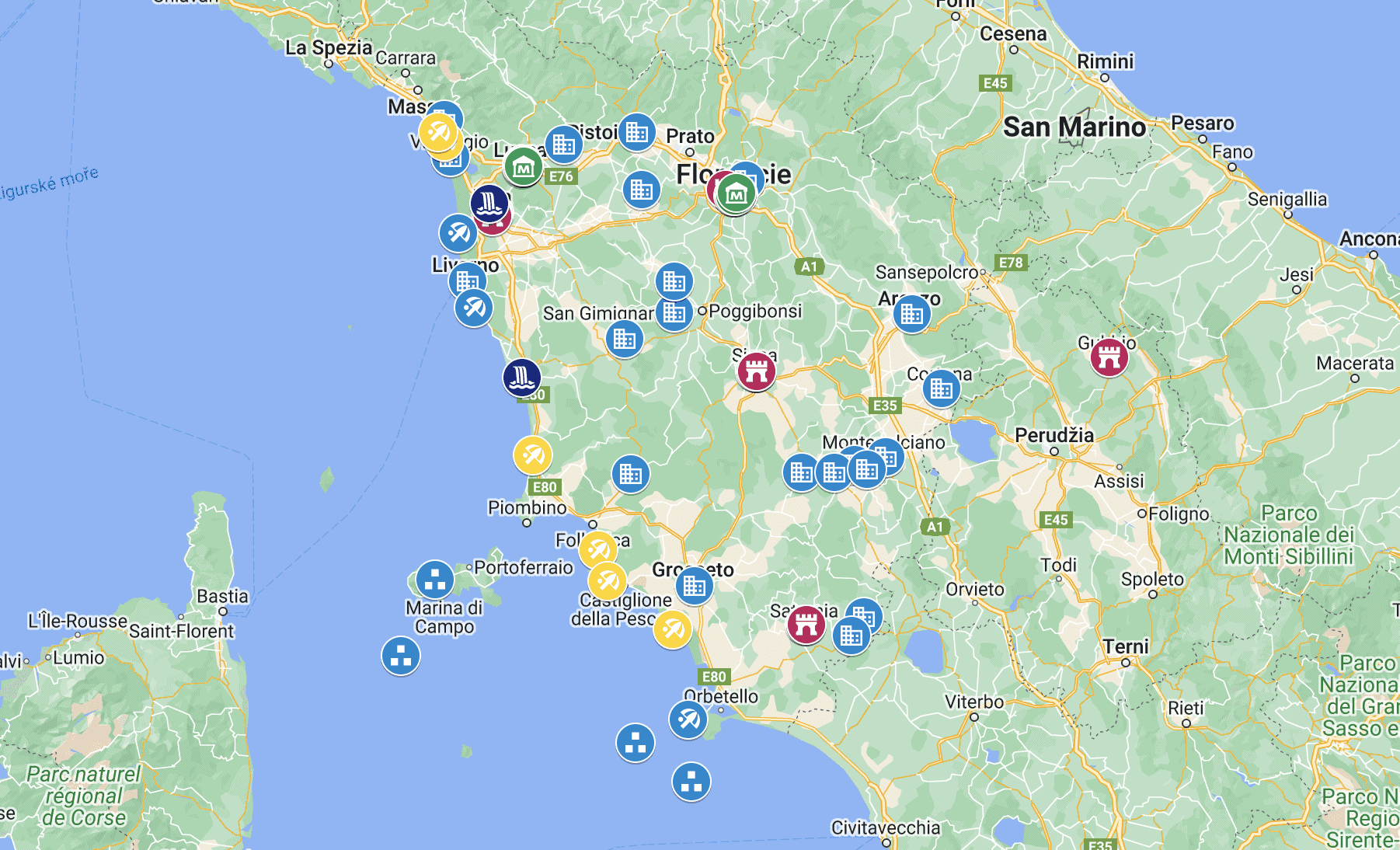Famous for its world-class wines, captivating history, stunning cities, and breathtaking landscapes, Tuscany holds a special place in the heart of Italy. It’s no wonder many consider it one of the most beautiful regions in the country (not that I’m biased!). Whether it’s your first visit or the beginning of a lifelong love affair, Tuscany offers something unforgettable for every traveler.
From deciding the best time to visit to discovering the must-see landmarks and indulging in its delicious flavors, let’s explore the very best that Tuscany has to offer.
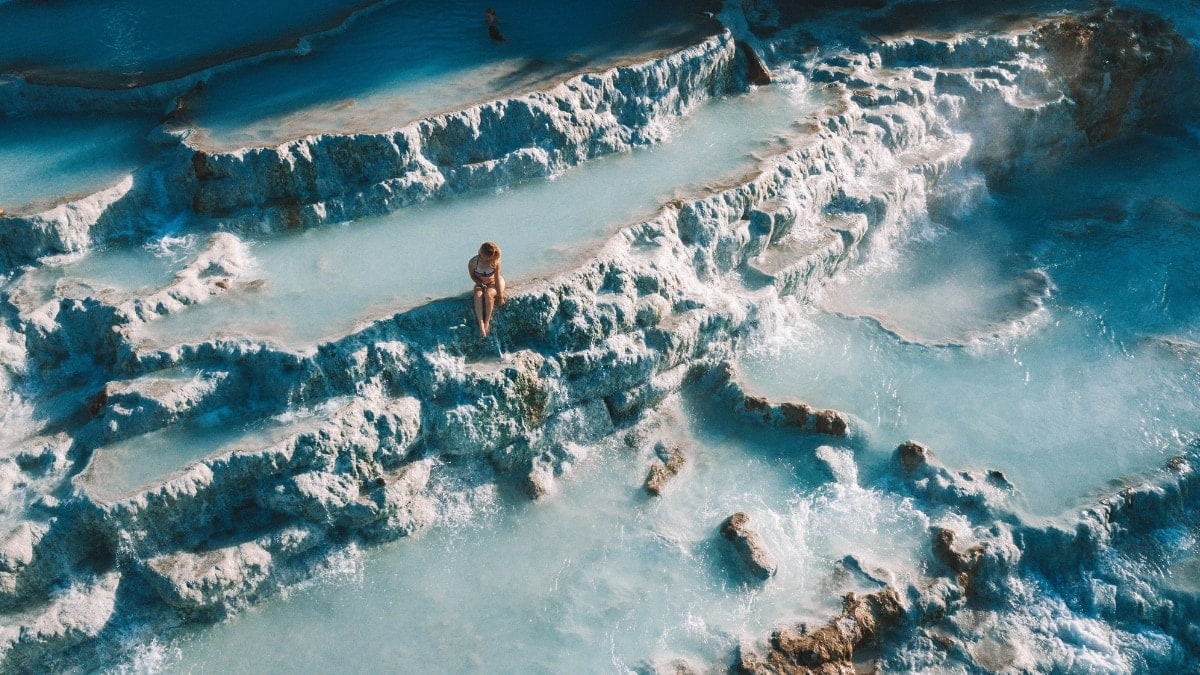
Best Time to Visit Tuscany
We recommend visiting Tuscany anytime between April and October, depending on what you’d like to experience and which part of the region you plan to explore.
Tuscany is a vast and diverse area, and the weather varies significantly across its landscape. In the north, you’ll find high mountains often dusted with snow even into March. Inland, the weather is typically mild and pleasant, while the coastal areas boast warm, sunny summers.
For a beach holiday filled with sunshine, summer is the perfect choice. If you’re more interested in exploring Tuscany’s charming cities and iconic landmarks, spring and autumn offer ideal conditions for sightseeing. And if the allure of vineyards and harvest season tempts you, plan your trip for September or October to experience the magic of grape harvesting firsthand.
| Moon | Average temperature |
January | 10 °C |
February | 13 °C |
March | 15 °C |
April | 18 °C |
May | 23 °C |
June | 27 °C |
July | 30 °C |
August | 30 °C |
September | 26 °C |
October | 20 °C |
November | 14 °C |
December | 11 °C |
Best Hotels in Tuscany
I’ve visited Tuscany several times, and each time we chose to avoid staying in Florence. Instead, we usually picked one central location for our trip, only occasionally switching accommodations.
For an unforgettable stay, consider booking accommodation in Siena, such as Un Terrazzo Sulla Magia, a charming option with plenty of character. For the quintessential Tuscan experience, you can’t go wrong with a classic Italian villa like Ca’ Bianca, complete with a pool and stunning views. Alternatively, the lovely town of Lucca is another great choice, offering more budget-friendly options like Casamariu.
How to Get to Tuscany: Your Travel Options
Once you’ve chosen your travel dates, the next question is how to get to Tuscany. There are several options, each with its own benefits depending on your preferences and travel plans.
By car to Tuscany
If you choose to drive, you can tailor your journey to suit you and you will be much more mobile on the spot, taking away the extra worry of finding public transport or a rental car.
Driving to Tuscany offers the most flexibility. You can tailor your journey to suit your schedule, explore hidden gems along the way, and enjoy the convenience of mobility once you arrive. No need to worry about navigating public transport or renting a car!
- From Prague
If you’re starting your trip from Prague, expect a journey of over 1,000 km that takes approximately 11 to 12 hours. Here are three route options:
- Via Pilsen and Germany
This is the shortest and fastest route. Travel through Pilsen, into Germany, and pass through Munich and Innsbruck before reaching Tuscany. - Via České Budějovice and Austria
Another popular route takes you through České Budějovice, into Austria via Salzburg, and then straight to Italy. - Via Brno and Vienna
The longest route passes through Brno and Vienna. While slightly longer, it’s a scenic drive that also takes about 12 hours.
- From Brno
- Via Vienna and Graz
The shortest route takes you through Vienna and Graz, then directly into Tuscany. - Via Vienna, Salzburg, and Innsbruck
This route is slightly longer, but offers picturesque views as you pass Salzburg and Innsbruck. - Via Salzburg and Villach
A variation of the second route, this option takes you from Salzburg to Villach before reconnecting with the main route into Tuscany.
By bus to Tuscany
Bus travel to Tuscany is offered by companies like FlixBus and Student Agency, with ticket prices ranging from approximately 800 to 1,500 CZK. However, the journey from Prague takes 15 to 23 hours, making it a relatively costly, time-consuming, and less comfortable option compared to other modes of transport.
By train to Tuscany
Traveling to Tuscany by train is another option to consider. If you choose Czech Railways, your journey will include transfers in Vienna and Bologna. Tickets are priced at approximately 1,300 CZK. From Prague, the trip takes about 17 hours, while from Brno, it’s a shorter journey of around 13.5 hours. You can purchase your ticket either online or directly at the ticket counter for added convenience.
By plane to Tuscany
The fastest and most comfortable way to travel to Tuscany is by plane. Two airports, Pisa and Florence, are accessible via direct flights from Prague.
If you’re open to flying with budget carriers, Ryanair offers tickets to Pisa at an average cost of 1,500–2,000 CZK. However, with a bit of luck, you might find return tickets for as low as 500–800 CZK. The flight is quick and convenient, taking just 1.5 hours. Additionally, Vueling provides flights to Florence, with ticket prices ranging from 1,500 to 4,000 CZK.
For those who prefer flying with classic airlines, options like KLM, Swiss, and Lufthansa connect Prague to Florence. While there are no direct flights during the winter months, these airlines offer comfortable journeys with a total travel time of around 6 hours, including layovers. Ticket prices range from 1,800 to 5,000 CZK, depending on the season and booking time.
💡 TIP: Learn how to search for cheap flights.
Don’t forget your insurance – SafetyWing Travel Insurance
Travel can bring unexpected surprises, so it’s always a good idea to have travel insurance. A fantastic option for frequent travelers and digital nomads is SafetyWing, which offers flexible, long-term travel and health insurance worldwide.
SafetyWing provides two insurance plans—Essential and Complete—both of which are billed monthly. This makes it easy to pause your coverage when you’re not traveling. Better yet, you can purchase a plan online even if you’re already abroad, with no requirement to return to your home country after a specific period.
The Essential Plan for individuals aged 10-39 starts at just $56.28 per month. This basic package covers medical treatment, hospitalization, emergency transport, lost luggage, travel interruptions, and flight delays. For added flexibility, you can extend coverage to include travel in the USA or risk sports. The plan provides a total coverage limit of $250,000 per claim, ensuring reliable protection for your journey.
The Complete Plan offers more comprehensive coverage, with a generous total coverage limit of $1,500,000. This plan goes beyond unexpected health emergencies to include ongoing medical care and even preventive doctor’s visits, making it ideal for travelers seeking extensive protection. Key features of the Complete Plan include:
- Transfer to a better-equipped hospital when necessary.
- Coverage for lost baggage.
- Access to psychological support services.
- Theft protection.
- Reimbursement for travel delays or interruptions due to family emergencies.
- Coverage for transportation or burial costs in the unfortunate event of death.
For travelers aged 18-39, pricing starts at $150.50 per month. You can also customize your plan by adding extended coverage for travel within the USA or for high-risk sports.
Transportation Options in Tuscany
Tuscany is brimming with stunning sights, attractions, and beautiful beaches, so you’ll likely want to explore beyond just one spot. But what’s the best way to get around Tuscany?
You can move quickly around Tuscany by train
The easiest way to reach Tuscany’s charming tourist towns is by train, with Trenitalia being the most popular service provider. For added convenience, you can download the Trenitalia app to search for connections, check schedules, and purchase tickets directly from your phone.
If you prefer, ticket machines are available at all train stations, allowing you to buy tickets quickly and pay by card.
By bus to smaller towns
Buses in Tuscany are a convenient option for both urban and intercity travel, especially for reaching smaller towns that are not accessible by train. You can purchase bus tickets at newsstands, supermarkets, and souvenir shops. Additionally, every major city has a main bus station with a dedicated ticket office for your convenience.
It’s always easiest by car
If you’re driving your own car on holiday, you’ll have the convenience of on-site transportation without needing to rely on other options. For those without a personal vehicle who still want the freedom of driving, car rental is a great solution. Major car rental companies can be found at the airports in Pisa and Florence. To easily compare rental options and find the best deal, consider using a service like RentalCars.
💡 TIP: We rent cars worldwide through RentalCars and have never had a problem.
Rules of the road in Tuscany
Before driving in Italy, whether in a rental or your own car, it’s important to familiarize yourself with the local rules of the road. While they are generally similar to those elsewhere, Italy’s driving style may feel a bit chaotic at times. However, speed limits are strictly enforced, and violations could result in fines being sent to you after your holiday.
Here are the key speed limits to keep in mind:
- 50 km/h in villages and urban areas
- 90 km/h on secondary roads
- 110 km/h on Superstrade (major highways)
Remember, traffic cameras are common, so be mindful of your speed to avoid unexpected penalties. Drive safely and enjoy the scenic roads of Tuscany!
27 Best Things to Do and See in Tuscany
Italy has long been a cultural hub, renowned for its rich history, stunning architecture, and unparalleled artistic heritage. Tuscany, in particular, is a treasure trove of cultural experiences. But beyond its gorgeous beaches, what are the must-see attractions in this captivating region?
💡 TIP: We’ve created a detailed map highlighting all the must-visit spots in Tuscany, including landmarks, beaches, hotels, and charming cities. With 97 curated locations, it’s your ultimate guide to exploring the region. For the price of a coffee, you can grab your copy here.
1) Florence – the city of artists
In the 15th century, Florence was a thriving hub for the arts, attracting some of the greatest artists of the era, including Donatello, Michelangelo, Botticelli, and many more. Thanks to its rich artistic heritage, the city is home to an impressive collection of must-see landmarks and cultural treasures. If your trip to Tuscany is limited to just a few days, Florence should undoubtedly be at the top of your itinerary.
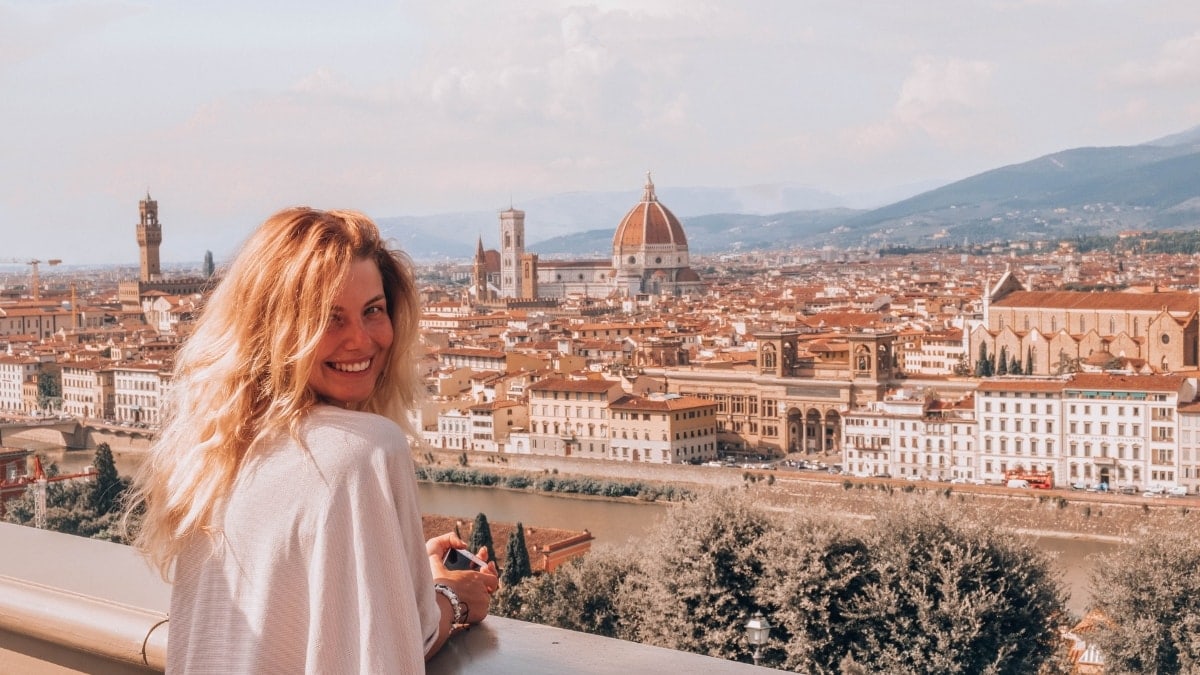
- Medicean Villas and Gardens – The Medici family, one of the most powerful and influential in Florence from the 13th century onwards, left behind a legacy of stunning villas and gardens. These masterpieces are now recognized as UNESCO World Heritage Sites and showcase the grandeur of Renaissance architecture and landscaping.
- Santa Maria del Fiore – Known as the Florence Cathedral, Santa Maria del Fiore is an iconic symbol of the city and a UNESCO World Heritage Site. Its massive dome, designed by the renowned architect Filippo Brunelleschi, is a marvel of 15th-century engineering. Tragically, this cathedral also holds a darker history, as the Medici brothers were assassinated here during a church service.
- Palazzo Vecchio – Located in the heart of Florence on Piazza della Signoria, Palazzo Vecchio is a striking medieval fortress. Once the center of political power, it now serves as Florence’s town hall and a museum, offering visitors a glimpse into the city’s storied past.
- Uffizi Gallery – Housed in the elegant Uffizi Palace, the Uffizi Gallery is one of the most famous art museums in the world. While entry often requires patience due to long lines, the wait is well worth it. The gallery boasts works by legendary artists such as Piero della Francesca, Leonardo da Vinci, Michelangelo, Raphael, Peter Paul Rubens, and many others. The star attraction is The Birth of Venus by Sandro Botticelli. When strolling through Florence, make sure not to miss this extraordinary cultural treasure.
Tip: In the summer, be sure to buy your tickets in advance through GetYourGuide. Especially with kids, you’ll appreciate not having to stand in line. In Italy, we always took advantage of that.
Tip: If you’re visiting in the summer, it’s a smart idea to book your tickets in advance through platforms like GetYourGuide. This is especially helpful when traveling with kids, as it lets you skip the long lines and saves valuable time. We’ve always found this a game-changer during our trips to Italy!
2) Pisa
When you think of Pisa, the iconic Leaning Tower is likely the first thing that comes to mind. Construction of this architectural marvel began in 1173 and took nearly 200 years to complete. Originally intended to be much taller, the tower stands at 56 meters today. Visitors can explore it daily, and for €20, you can climb to the top for breathtaking views of the city.
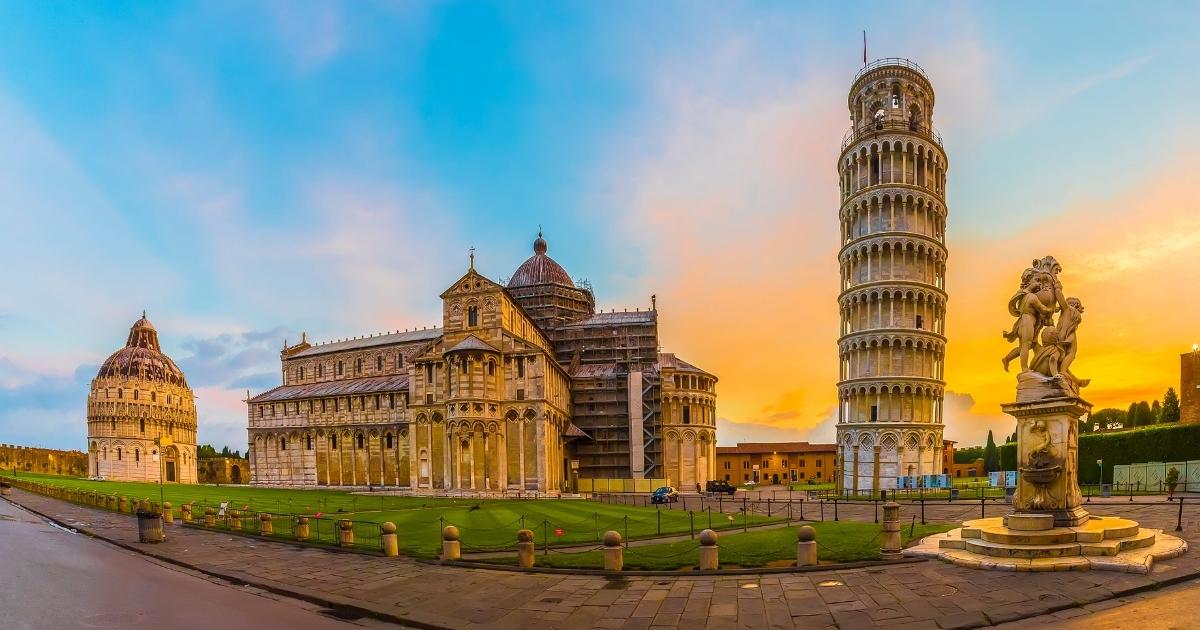
Pisa offers much more than just its famous Leaning Tower. Here are some other must-see sights:
- Church of the Assumption of the Virgin Mary – Located in the Piazza dei Miracoli, right next to the Leaning Tower, this church is a masterpiece of innovation for its time. Its striking white façade, crafted from Carrara marble, immediately catches the eye, while the unique cross-shaped design adds to its charm. Best of all, entry to the church is free.
- Camposanto Monumentale – While you’re in the Piazza dei Miracoli, take a stroll to the Camposanto Cemetery. This historic site is a treasure trove of stunning architecture, intricate tombs, captivating frescoes, and ancient sarcophagi—a peaceful place filled with history and beauty.
- The Botanical Garden – Founded in the 16th century, Pisa’s Botanical Garden is a serene retreat featuring vibrant flower beds, fragrant herbs, elegant fountains, and a charming arboretum. It’s a living testament to centuries of horticultural excellence and still enchants visitors to this day.
3) Saturnia Spa Town
Saturnia, a picturesque spa town in northern Tuscany, is a must-visit destination for relaxation and natural beauty. To truly enjoy its charm, plan to arrive early in the morning, as the area can get quite crowded later in the day. When we visited, we made sure to arrive right when it opened, and it made all the difference!
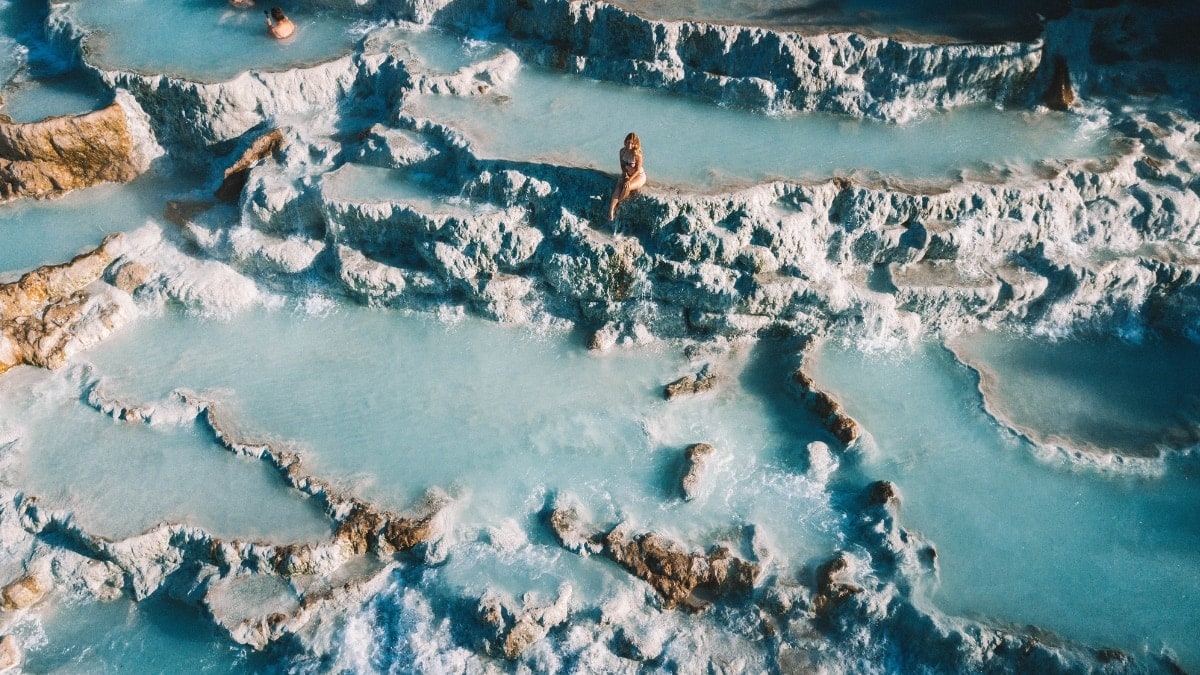
Here are the top attractions worth visiting in Saturnia:
- Cascate del Mulino: These stunning sulfurous springs bubble up naturally from the ground, creating a series of cascading pools where you can enjoy a rejuvenating soak.
- Museo Polo Culturale Pietro Aldi: An art museum showcasing exquisite paintings, offering a glimpse into the region’s rich artistic heritage.
- Church of Santa Maria Maddalena: A charming and historic church, perfect for those who appreciate serene architecture and local history.
4) Siena
This historic town, the capital of the province of Siena, is renowned for its remarkably well-preserved medieval architecture, offering visitors a glimpse into the charm and grandeur of the Middle Ages.
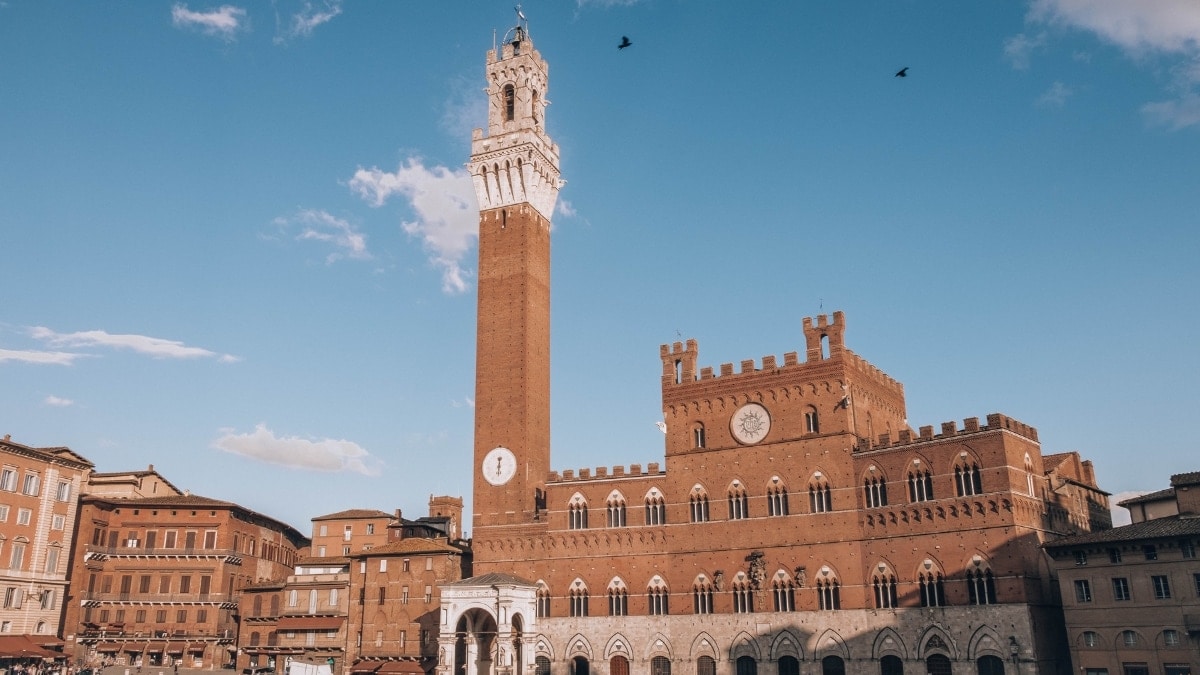
Siena is brimming with incredible sights to explore, but these highlights are not to be missed:
- Piazza del Campo: This iconic square, known for its unique shell shape, is the heart of Siena. While surrounded by historic monuments, the square itself is a breathtaking attraction.
- Cathedral of the Assumption of the Virgin Mary: Built in the 13th century, this stunning cathedral is adorned with striking black-and-white marble stripes, making it a true architectural masterpiece.
- The Mangia Tower: A quintessential symbol of Siena, this 87-meter-high tower has been standing proudly since the 14th century. You’ll find it featured on countless postcards and photographs of the city.
5) San Gimignano
This city, located in the province of Siena, boasts a historic center recognized as a UNESCO World Heritage Site. It is best known for its iconic towers, which have become a symbol of its rich history and architectural splendor.
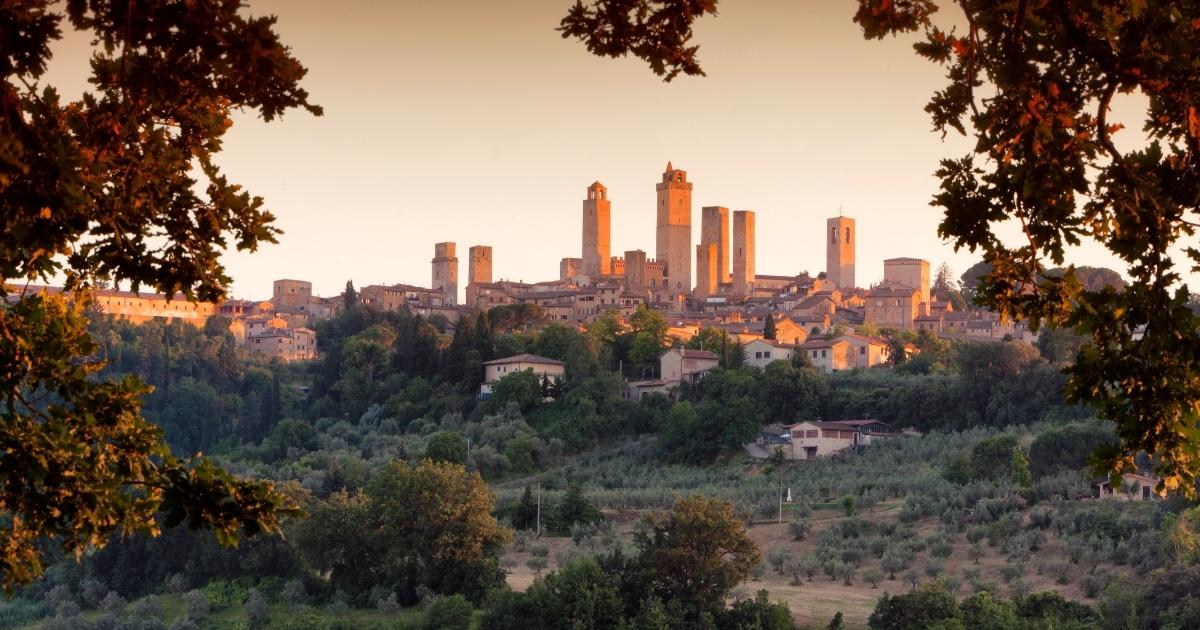
- Galleria Continua: While in San Gimignano, make time to visit Galleria Continua, a remarkable space showcasing works by Michelangelo, contemporary installations, and modern art. This collection offers a truly enriching cultural experience.
- Tenuta Torciano: Don’t miss the opportunity to explore Tenuta Torciano, a stunning local vineyard where you can savor the essence of Tuscany through exceptional wines and unforgettable scenery.
6) Lucca
The capital of its namesake province is home to a wealth of remarkable treasures:
- Church of San Michele in Foro: Located in Piazza San Michele, this stunning church captivates visitors with its unique and timeless beauty.
- Torre Guinigi: A standout feature of the city, this historic tower is crowned with a lush canopy of living trees, creating a striking and unforgettable sight.
- Pinocchio Park: Perfect for families, this charming amusement park and garden bring the beloved tale of Pinocchio to life, delighting children and adults alike.
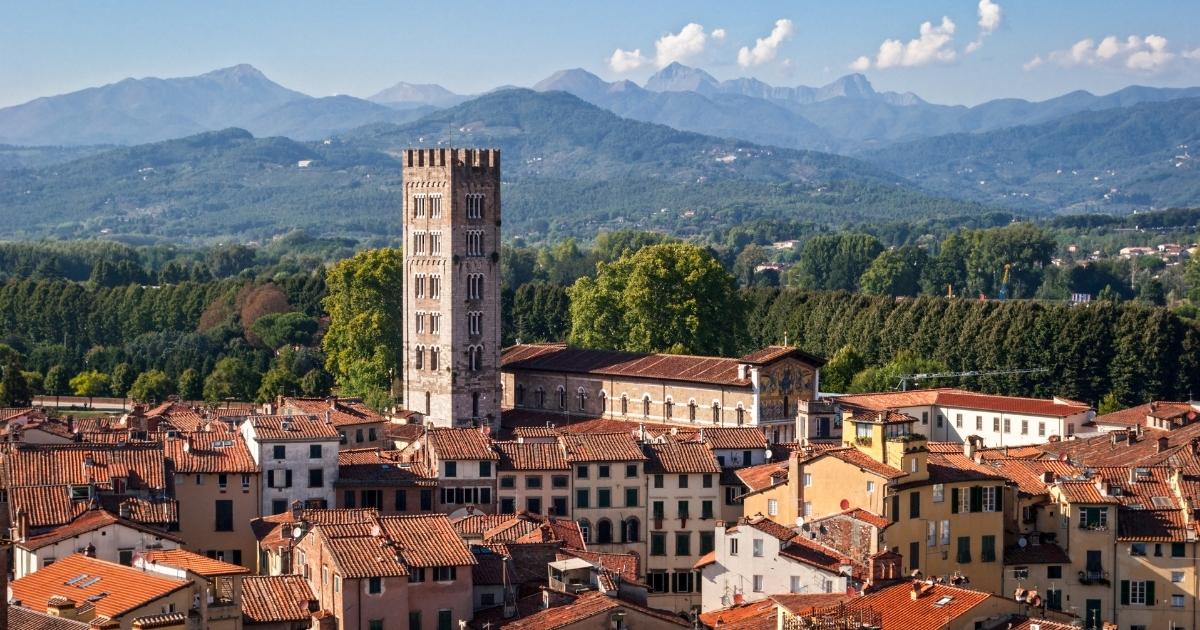
7) Chianti Region
A very well-known wine-growing region, whose wine boasts the DOCG label. This means you will taste wines of the highest quality. It is located between Florence and Siena. It is an ideal place for cycling, walking or excursions to local picturesque villages. A wine festival is held here in September. If you love wine, be sure to take advantage of GetYourGuide’s offer to go wine tasting.
This renowned wine region, located between Florence and Siena, is celebrated for its exceptional wines, proudly bearing the prestigious DOCG label—a guarantee of the highest quality. It’s a perfect destination for cycling, leisurely walks, or exploring the charming local villages that dot the landscape.
In September, the region comes alive with a vibrant wine festival, offering a fantastic opportunity to immerse yourself in the local culture. For wine enthusiasts, don’t miss the chance to join a wine-tasting tour through GetYourGuide to savor the region’s finest flavors.
8) Montalcino
Another renowned wine region, Montalcino, is famous for its exceptional red wine, Brunello di Montalcino. This picturesque mountain town, part of the province of Siena, is steeped in history and charm, with its historic center encircled by ancient walls. The town’s origins trace back to the 9th century, making it a destination rich in both cultural and vinicultural heritage.
9) Cortona
This town, founded by the Etruscans, has been the residence of the bishop since the 14th century. It has also been home to two renowned artists, Pietro da Cortona and Fra Angelico. If you’re planning a visit, be sure to explore the Accademia Etrusca Museum, which offers fascinating insights into the region’s ancient history, and the Basilica of Saint Margaret of Cortona, a stunning testament to its spiritual and architectural heritage.
10) Volterra
Volterra is a historic town known for its well-preserved architecture, showcasing elements from both ancient and medieval times. Perched on a rocky hill and encircled by imposing walls, it offers a glimpse into centuries of history.
- Gallery in the Minucci-Solaini Palace: This gallery features an impressive collection of Italian paintings from the 14th to the 17th century, making it a must-visit for art enthusiasts.
- Guarnacci Museum: Dedicated to Etruscan artifacts, the Guarnacci Museum provides a fascinating look into the region’s ancient past, offering a unique cultural experience.
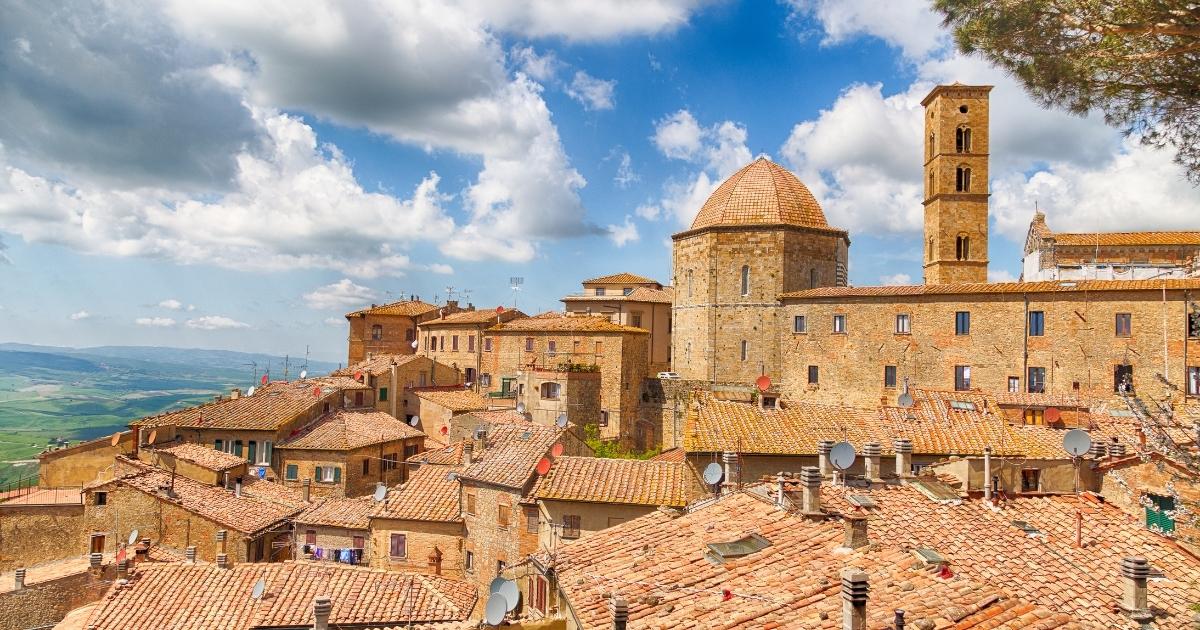
11) Montepulciano
This town is another gem renowned for its wine, particularly its unique late-ripening blue grape variety. Beyond the vineyards, don’t miss the chance to visit the stunning Church of Madonna di San Biagio, a masterpiece of Renaissance architecture set amidst picturesque surroundings.
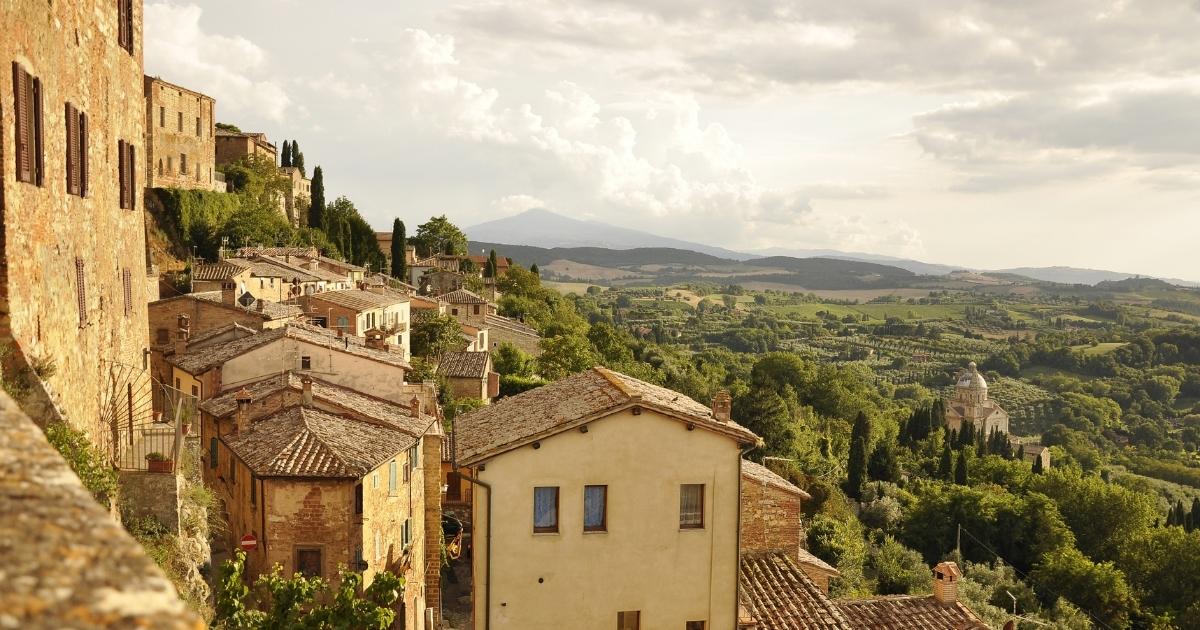
12) Arezzo
This city is renowned for its wealth and its exceptional production of gold jewelry, which is exported throughout Europe. Beyond its glittering reputation, the city also boasts cultural treasures, including the breathtaking frescoes in the Basilica of St. Francis of Assisi, masterfully created by Piero della Francesca.
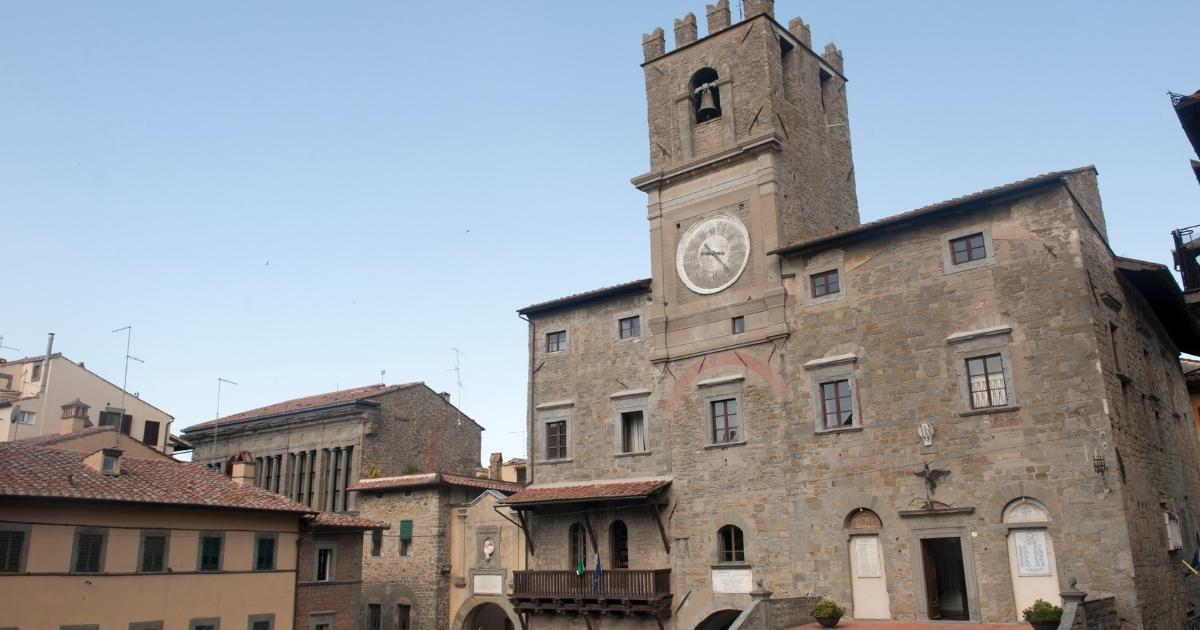
14) Livorno
This charming port town, the capital of the province of Livorno, is known for its picturesque landscapes and a wealth of attractions to explore.
- Terrazza Mascagni: This stunning waterfront terrace is the perfect spot for an evening stroll. Enjoy breathtaking views of the sea and a magical sunset that will leave you in awe.
- Fortezza Vecchia: Overlooking the harbor, this medieval fortress is a must-visit for history enthusiasts, offering a glimpse into the town’s storied past.
- Mercato delle Vettovaglie: Located in a 19th-century building, this vibrant market is a food lover’s paradise, featuring fresh produce, delicious treats, and cozy cafés.
- Acquario di Livorno: Discover the wonders of the Mediterranean Sea at this fascinating aquarium. Highlights include a variety of marine life, including sharks, making it a great stop for families and animal enthusiasts alike.
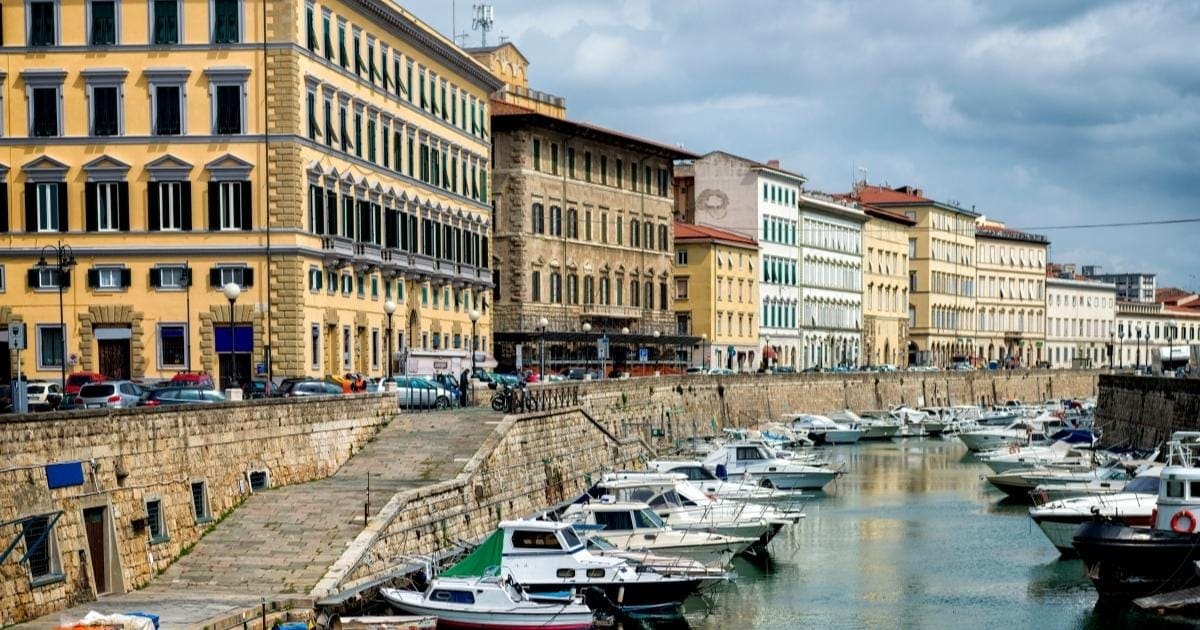
15) Viareggio
This vibrant town is renowned for its beautiful beaches and its traditional carnival, a celebration with a history spanning over three centuries. To delve deeper into the carnival’s rich heritage, be sure to visit the Citadella del Carnevale, a themed museum dedicated to this iconic event.
16) Massa Marittima
This charming city is known for its mineral springs, premium olive oil, and a rich history of iron, copper, and mercury mining. Though small in size, it offers a wealth of attractions and hidden gems.
- Torre del Candeliere: This historic tower, part of the city’s fortifications, provides stunning views of the surrounding area. For a small fee, you can climb to the top and take in the breathtaking scenery.
- Museum of Mining: Explore the city’s long-standing tradition of metal mining at this fascinating museum, which showcases centuries of history and craftsmanship.
- Piazza Giuseppe Garibaldi: At the heart of this square stands a beautiful Romanesque cathedral, a testament to the city’s architectural and cultural heritage.
17) Grosseto
The capital of the province of Grosseto is renowned for its exceptional wine and authentic Italian olive oil. This charming city is home to numerous museums and churches, with the impressive Aldobrandeschi Palace standing out as a must-see landmark.
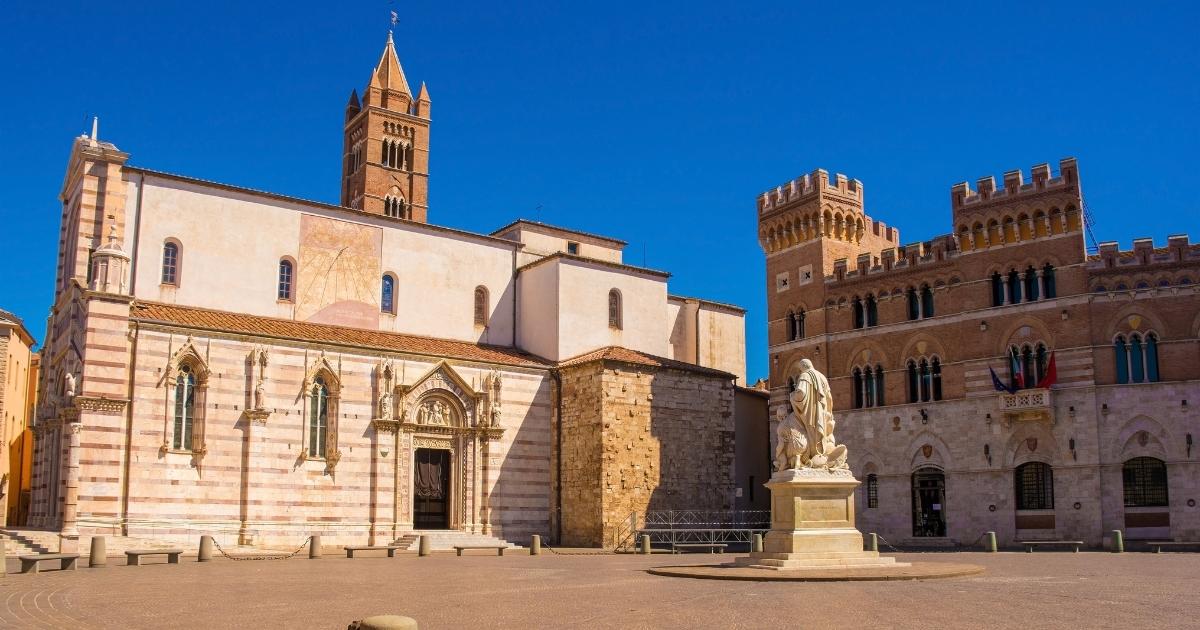
18) Fiesole
This town near Florence is famously known as the setting for Giovanni Boccaccio’s Decameron, offering a rich blend of history and natural beauty.
- Vincigliata: Nestled among hills and forests, this enchanting castle is surrounded by stunning landscapes, making it a perfect spot for nature and history lovers.
- Roman Amphitheatre: Dating back to the 1st century BC, this archaeological site offers a glimpse into the grandeur of ancient Roman entertainment and architecture.
- Etruscan Walls: Explore the ruins of these ancient walls, a testament to the town’s deep-rooted Etruscan heritage.
19) Certaldo
This city is famously associated with Giovanni Boccaccio, the renowned Italian writer and poet of the 14th century. His former residence still stands on the main street, Via Boccaccio, serving as a fascinating piece of literary history. While the interior is adorned with frescoes by Pietro Benvenuti, these artistic additions date back to the 19th century, adding another layer of charm to this historic home.
20) Vinci – behind the most famous painter
This modest little town holds a special place in history as the birthplace and early home of Leonardo da Vinci, one of the world’s most celebrated artists and inventors. The local castle has been transformed into the Leonardo da Vinci Museum, where models of his ingenious inventions are on display. Just a short distance from the castle stands the Church of St. Cross, where Leonardo was baptized, adding a spiritual connection to his remarkable story.
21) Pietrasanta
The historic town of Pietrasanta, founded in the 13th century, is renowned for its rich history in marble mining. This exquisite marble was famously used by Michelangelo for his masterpieces. Just a short distance away lies the charming seaside resort of Marina di Pietrasanta, a popular destination for those seeking sun, sand, and relaxation.
22) Pistoia
Pistoia is a city renowned for its historical monuments, vibrant flower markets, and exceptional wine.
- Pistoia Zoo – a must-visit for animal lovers, home to a variety of creatures including red pandas, lions, and bears.
- Temple of Our Lady of Humility – designed by the famed architect Giorgio Vasari. This stunning structure is crowned by the third-largest dome in Italy, a testament to its architectural grandeur.
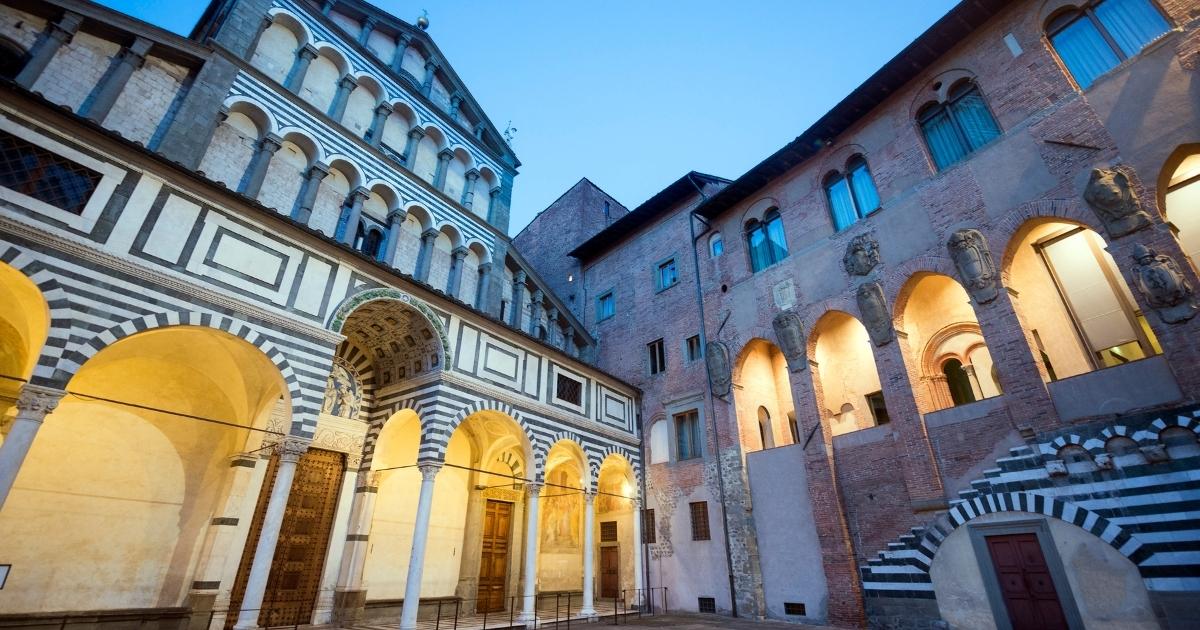
22) City of the Etruscans – Sorano
This ancient town, founded by the Etruscans in the 3rd century, is steeped in history and charm. One of its unique features is the Jewish Quarter on Via del Ghetto, which dates back to the 17th century. Here, you’ll find a historic synagogue, no longer in use, but still a poignant reminder of the town’s diverse cultural heritage.
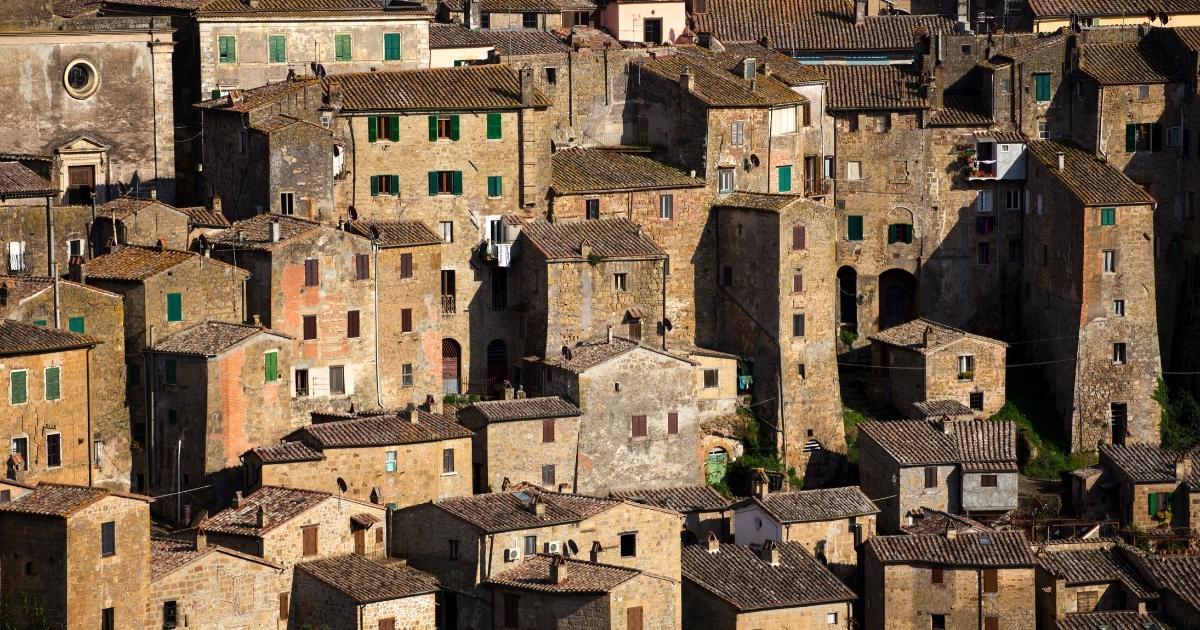
23) Little Jerusalem Pitigliano
This historic city, known for its captivating architecture, is home to a significant Jewish community, earning it the nickname “Little Jerusalem.” Pitigliano is notable for being the site of Italy’s first official synagogue, a testament to its rich cultural heritage. Perched atop a rocky hill, the town’s houses seem to merge seamlessly with the natural landscape, while vineyards and olive groves stretch out around it, adding to its picturesque charm.
24) Val d’Orcia
Val d’Orcia embodies everything you imagine when you think of Tuscany: rolling hills, endless fields, and picturesque vineyards. The iconic cypress-lined roads, found around nearly every corner, add a distinct and timeless charm to the landscape. A visit to the thermal springs of Bagno Vignoni offers a unique experience, though these historic waters are not for bathing. It’s no surprise that this breathtaking region is recognized as a UNESCO World Heritage Site.
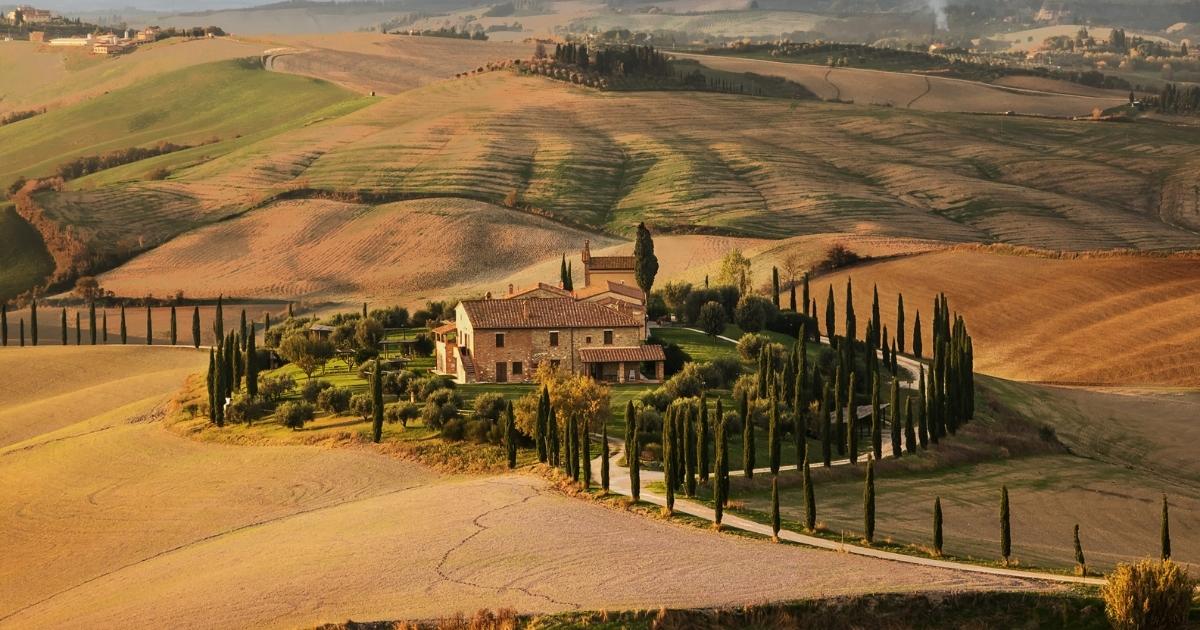
25) Apuan Alps
If you’re looking to escape the hustle of sightseeing and enjoy a few relaxing days in nature, head to the northern part of Tuscany, where the majestic Alps rise dramatically. These mountains are composed of crystalline rocks, and the region is famous for its white marble quarries. The highest peak in the range is Monte Pisanino, standing at an impressive 1,945 meters, offering stunning views and a serene retreat.
26) Granite island of Giglio
Giglio is a stunning granite island located just 16 km off the mainland, forming part of the Tuscan Islands National Park. The island is known for its picturesque vineyards, charming restaurants serving local delicacies, and a variety of attractions to explore. With a short ferry ride of about an hour, Giglio Island makes for an ideal day trip if you’re spending a few days in Italy.
27) Tuscan Casentino Valley
The Tuscan valley along the Arno River is framed by the majestic Monte Falco and Monte Falterona mountains. This picturesque region is home to a stunning National Park filled with serene beech and fir forests. Visitors can savor local delights such as sheep’s cheese and the traditional bread, schiacciata. Renowned for its thriving agro-tourism, the area offers authentic rural experiences. Casentino also holds literary significance, as it was famously featured in Dante Alighieri’s Divine Comedy.
💡 TIP: We’ve created a detailed map highlighting all the must-visit spots in Tuscany, including monuments, beaches, hotels, and cities. With 97 carefully curated locations, it’s the perfect guide to exploring the region. You can get it for the price of a coffee here.
Itinerary for a 7-day roadtrip in Tuscany
You could drive around Tuscany for a month and not see everything. Since I’ve been to Tuscany several times, I’ve put together an itinerary to see the best of Tuscany.
Day 1. Florence
You could spend more than one day in Florence. If you love art, definitely consider 2-3 days. But it is true that during the summer Florence is full of tourists and when we were there at the end of spring, we were glad to be going to smaller towns the next day.
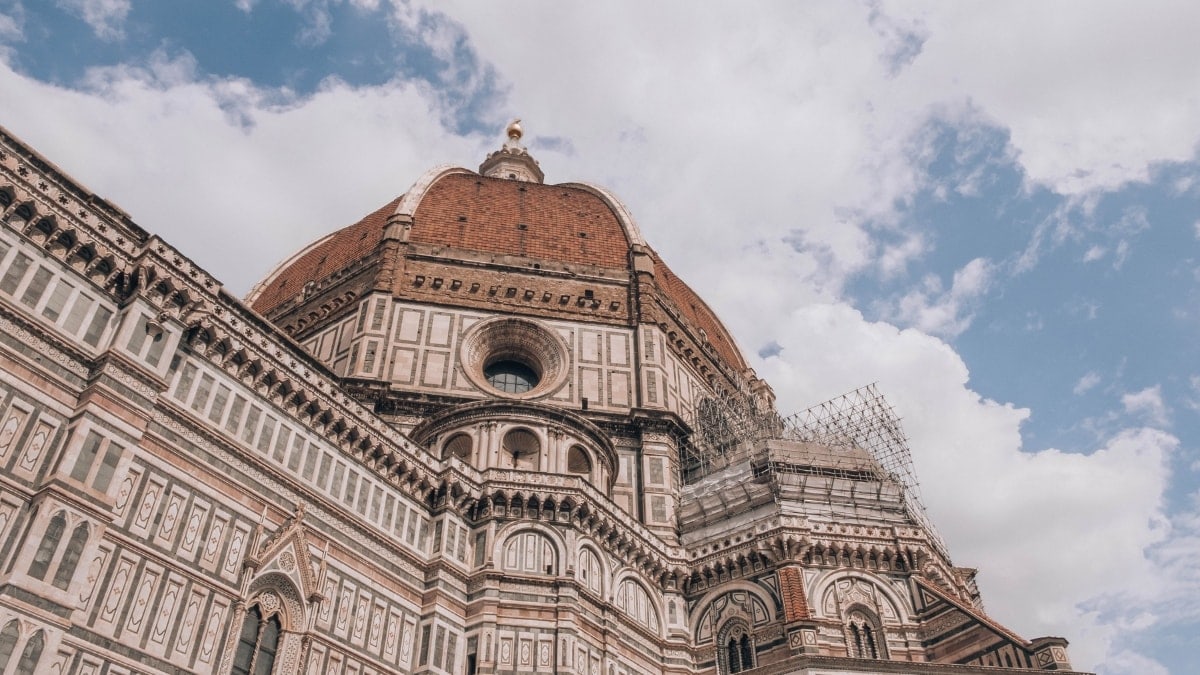
What to see in Florence:
- Cathedral of Santa Maria del Fiore (Duomo)
- Uffizi Palace
- Pitti Palace
- Ponte Vecchio Bridge
- Church of Santa Croce
- Church of San Lorenzo
- Piazza della Signoria
- Accademia Gallery
- Santa Maria Novella Cathedral
- Chapel of San Giovanni Battista (Baptistery)
- Bargello Palace
- Piazza delle Cascine
- Church of Santo Spirito
🏠 Where to stay in Florence: A totally luxurious hotel is Hotel Ungherese Small Luxury Hotel, but if you’re looking for something cheaper, check out hu Firenze Camping in Town, but beware, it’s far from the centre.
Day 2. From Florence to Siena
Leave Florence early in the morning for Siena. In Siena, you must visit the shell-shaped Piazza del Campo with its fountain by the famous artist Jacopo della Quercia. It is one of the most beautiful, original and important squares, which is also often full of tourists, so it is advisable to arrive first thing in the morning.

Be sure to see the Cathedral of the Assumption, the Mangia Tower and other historical monuments in Siena.
🏠 Where to stay in Siena: If you’re going in the summer, you’ll want to stay in a hotel with a pool; for a luxury experience, you can choose the relatively expensive but gorgeous Hotel Certosa Di Maggiano; if you’re on a budget, opt for the more affordable Il Pozzo Di Sant’Andrea or Palazzo del Papa Country Suites. A cheaper option is Albergo Bernini or the pool-free Villa Montarioso.
Day 3. Going to the heart of the Tuscan countryside in Val d’Orcia
From Siena, take the SR2 road towards San Quirico d’Orcia. From here continue on SR146 in the direction of Montepulciano. It is one of the most beautiful roads in Tuscany, you will probably stop very often, because this is where you take those classic views of the Tuscan countryside that you see in magazines and on postcards.
Visit the small Tuscan towns of Pienza, Montepulciano, San Quirico d’Orcia, Monticchiello, Montalcino.
I recommend staying in Montalcino, as it will only take you an hour and twenty minutes to get to Saturnia, where you definitely want to arrive on time.
🏠 Where to stay: If you want the real experience, you can stay at the luxurious Castel Brunello or the slightly cheaper but still quite expensive Podere Brizio. For more affordable accommodation, we recommend the Cordella in Montalcino Wine Resort and Agriturismo Collodi.
Day 4. Spa town of Saturnia (can be skipped)
I recommend arriving very early in the morning, otherwise you will have a huge amount of tourists. Saturnia will enchant you at first sight with its turquoise water flowing in cascades just below the town in the valley. Remember to take off all silver jewellery before swimming so that it doesn’t turn black.
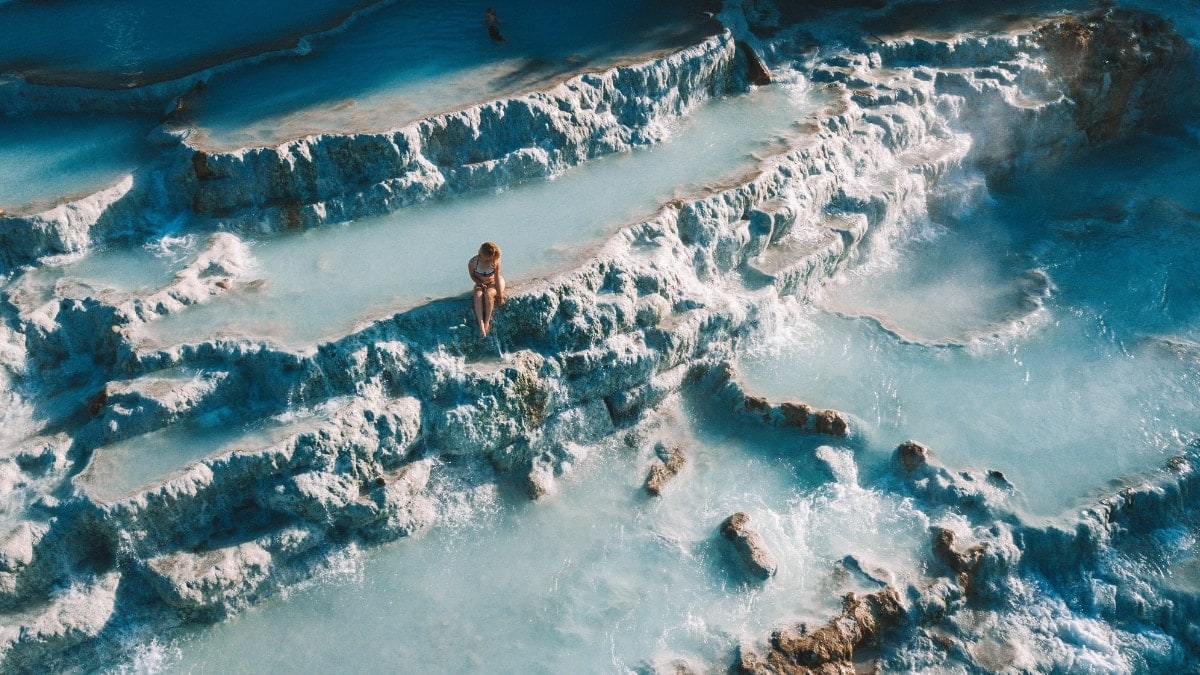
There is more to explore in Saturnia, such as Porta Romana or Chiesa di Santa Maria Maddalena, but I recommend visiting the Etruscan city of Sorano.
Finish the day in Grosseto, where you can enjoy an evening wine tasting or take an evening stroll through the historic centre.
🏠 Where to stay in Grosseto: You can stay at Hotel Nuova Grosseto or B&B Le Mura.
Day 5. San Gimignano and Volterra
These two beautiful Tuscan towns are quite close to each other and can therefore be visited in one day. If you have more time, you can also go to Certalda, where Giovanni Boccaccio lived.
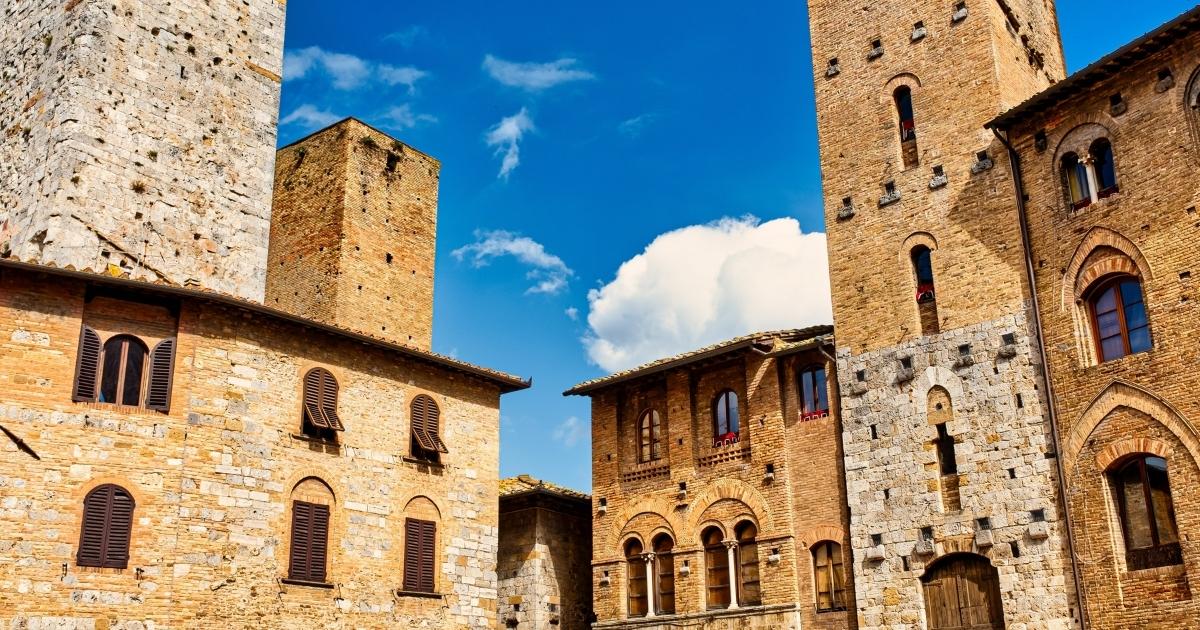
San Gimignano is famous for its 14 medieval towers and beautiful historic centre. I recommend to go here first, especially because it is usually quite crowded after lunch in the summer months.
Who hasn’t heard of the Etruscan city of Volterra! Volterra, or Velathri in Etruscan, is an extremely well-preserved ancient and medieval historical city, also called the city of alabaster. It can be found on a rocky plateau between the valleys and is surrounded by double walls.
🏠 Where to stay in Volterra: I would definitely go to the extremely well rated and especially cheap accommodation Fontesettimena, which is outside the centre. Or I would stay right in the centre of Volterra at Albergo Etruria. For us fans of typical Tuscan houses, there’s also the slightly more expensive Appartamenti Villa Mascagni.
Day 6. Across the beaches to the Leaning Tower of Pisa
Although beaches don’t usually feature in photos of Tuscany, Tuscany has quite a few. Head to Spiagge bianche beach first thing in the morning and then drive along the coast to Livorno. Livorno is a fairly industrial port town, well worth a short visit if you have enough time. If you’re in a hurry, head straight to Pisa.
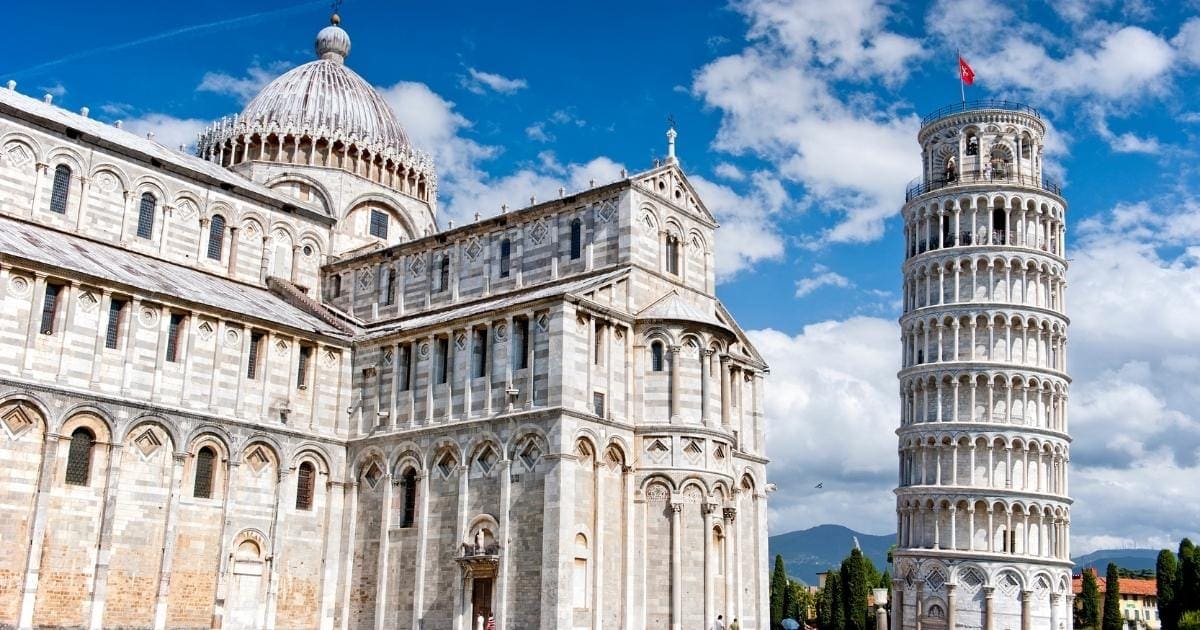
At the Leaning Tower of Pisa, you will see a true tourist spectacle. People will be leaning from one side to the other, trying to push the tower away in photos or snapping pictures. You might want to take a funny photo yourself. But there are far more interesting places to visit in Pisa than just the Leaning Tower, for example:
- Cathedral of the Assumption of the Virgin Mary,
- Piazza dei Miracoli,
- Camposanto Cemetery,
- Piazza dei Cavalieri,
- Santa Maria della Spina.
🏠 Where to stay in Pisa: Near the centre, you can stay at Casa Carducci 33 or La Corte di Lisa. For parking, however, B&B La corte di Stelio is preferable or just outside Pisa you will find Villa Orsini – A Retreat in Pisa – Food and Relax.
Day 7. Lucca and surroundings
Lucca is one of the popular cities that you can do in one day, but you might fall so in love with it that you want to stay. What to definitely visit:
- City Walls (Lucca Walls)
- San Martino Cathedral
- Guinigi Palace
- Church of San Michele in Foro
- Piazza dell’Anfiteatro
- Church of San Frediano
- Pfanner Palace
- Church of Santa Maria Forisportam
- Piazza San Giovanni
- Torre Guinigi Museum.
If you get tired of Lucca, you can go to other towns such as Collodi, Pistoia, and Prato.
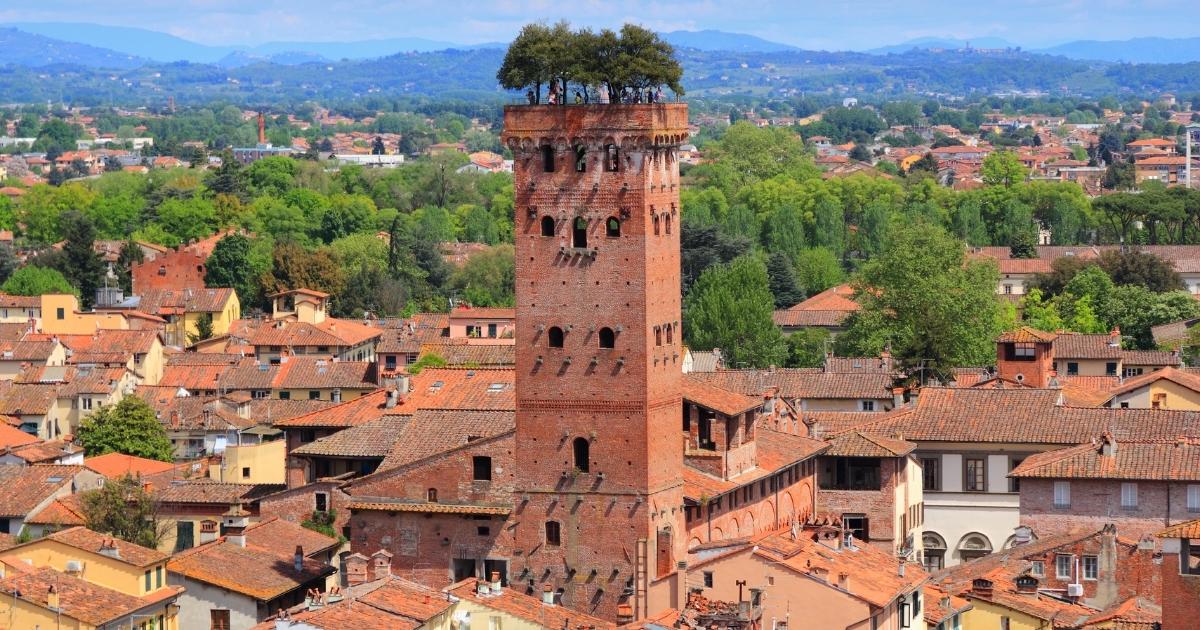
🏠 Where to stay in Lucca: Beautiful accommodation is Lucca in Villa Lucrezia. For those who want accommodation with a pool, we recommend ai Santinelli.
Day 8. Return to Florence
If you’ve flown in, you’ll definitely be returning to Florence in the morning, where you can still visit the sights you missed or head out for sunrise. If you’re driving, you’re probably rearranging your itinerary to spend at least one full day in Florence, although art and architecture lovers will want to stay at least three days.
Tuscany with children: where to go?
Tuscany is absolutely perfect for a holiday with children, either choose a hotel right by the beach, such as Park Hotel Villa Ariston, or head to one of the water parks. Near Pisa, for example, there is Piccolo Mondo and in the province of Livorno there is Aqua Village Water Parks.
Boat trips in Tuscany
From Porto Santo Stefano you can reach the fabulous islands of Giglio, Pianosa and Giannutri by boat, beautiful islands with amazing coves. Elba is also beautiful. Some of the most beautiful beaches in the whole of Tuscany are right here, such as Fetovaia and Cavoli. Fetovia beach in particular has beautiful clean and clear water.
Beaches in Tuscany: Holidays by the sea
Whatever time of year you arrive in Italy, the beaches are definitely worth a visit.
The best and most beautiful beaches of Tuscany
Let’s take a look at the most beautiful beaches from the north of Tuscany to the south.
Versilia
On the north coast of Tuscany in Versilia, which is spectacular thanks to the imposing backdrop of the Apuan Alps, you’ll find the sandy beaches of Viareggio. It is a popular seaside destination, known for its summer nightlife. Viareggio is ideal especially for families with children, you will appreciate especially the soft sand and pleasant resorts.
Costa degli Etruschi: Quercianella, Castiglioncello, Baia del Quercetano
Heading south from Livorno you will reach the Costa degli Etruschi. A scenic road leading directly over steep wild cliffs overlooking the sea leads to Quercianello, a quiet and peaceful place surrounded by pine forests and Mediterranean scrub.
Baia del Quercetano beach
In Castiglioncello you will find one of the most beautiful beaches in the whole of Tuscany! Baia del Quercetano! A bay with crystal clear water surrounded by greenery and villas hidden amidst the vegetation
Golfo di Baratti, Populonia and Buca delle Fate
Further south of Castiglioncello we reach the picturesque Golfo Di Baratti, a beautiful and quiet bay framed by dunes covered with pine forests and a beautiful sandy beach. Here lies one of the most important Etruscan necropolises in Tuscany, dating from the ninth to the third century BC.
Cala Violina
Cala Violina is a beautiful bay in Maremma, in the municipality of Scarlino. The bay is enclosed by two headlands and there you will find fine white sand.
Castiglione della Pescaia
Still in Maremma, overlooking the sea, lies the picturesque Castiglione della Pescaia with its long sandy beach. Again, amazing resorts and crystal clear water. Especially families with children will appreciate it.
Beaches in the south of Tuscany in Monte Angentario
In Monte Argentario we are in the very south of Tuscany, almost on the border with the Lazio region. Argentario is a rocky promontory with charming bays and coves with crystal clear water. Porto Ercole and Porto Santo Stefano are beautiful fishing villages that have now become important tourist centres.
Among the most beautiful beaches in the area are Giannella beach, characterised by sand dunes, and la Feniglia, a long sandy beach.
Sandy beaches in Tuscany
If you prefer sand to rocks, this is a list of the most uninteresting sandy beaches in Tuscany:
- Camaiore – located near the town of the same name, it’s worth a visit if you want to enjoy some relaxation.
- Cala Violina – located in the Bandite di Scralino reserve. Interestingly, the sand on the beaches contains quartz grains.
- Roccette – located near Grosseto. Head to the beach if you want privacy.
- Castiglione della Pescaia – this beach is located in the harbour town by name.
- Marina di Alberese – you can find the beach in Maremma and admire the beautiful almond blossoms.
- Marina di Pietrasanta – is part of the Tuscan Riviera, it is mainly peace and quiet. An ideal place for relaxation.
- San Vincenzo – these beaches stretch for up to 20 kilometres and there is something for everyone. It is an ideal beach for a family with children.
- Cecina – holiday area in Livorno.
Pebble beaches in Tuscany
Even beaches with pebbles do not lose their charm:
- Marina di Pisa – the main unpaid beach is pebble, also suitable for families with children. Swimming is safe here, large boulders protect the beach from large waves and currents.
- Calafuria sandstone cliff – if you descend the cliffs, you will reach the pebble shore. The seabed is, however, sandy.
- Cala del Gesso – hard to reach, but beautiful pebble cove with emerald clear sea.
- Sansone – located on the island of Elba, it is covered with white pebbles and the sea is ideal for those who like to dive.
- Camogli – a pebble beach in northern Italy is the place to visit if you want to enjoy swimming in the sea with a view of the majestic mountains in the background.
Map with points of interest on your phone
Save a map of the most interesting places in Tuscany directly on your phone. After purchase, you will receive a link to a non-public Google Map that you can open or print at any time on your phone. All recommended ones are clearly marked on the map:
- Cities
- Sights
- Recommended hotels
- Museums
- Waterparks
- Islands
- Sandy beaches
- Pebble beaches


